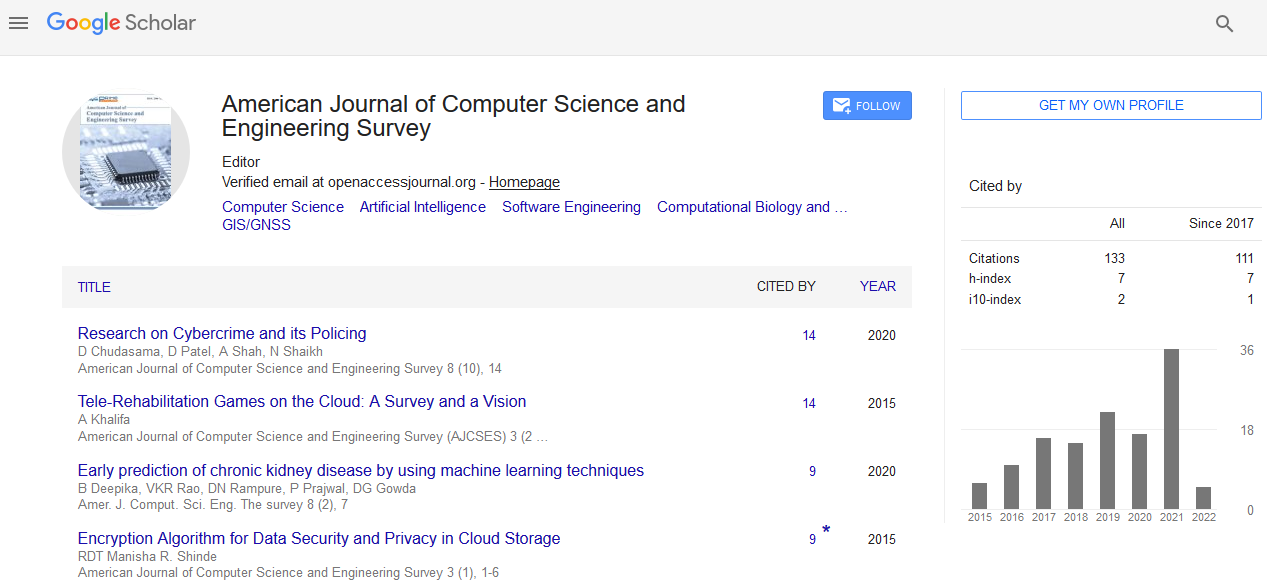Perspective - (2023) Volume 11, Issue 4
Hydrographic surveys: Environmental Management and Conservation
Sallon Saraj*
Department of Engineering, Yale University, USA
*Correspondence:
Sallon Saraj,
Department of Engineering, Yale University,
USA,
Email:
Received: 29-Nov-2023, Manuscript No. ipacses-23-18458 ;
Editor assigned: 01-Dec-2023, Pre QC No. ipacses-23-18458 (PQ);
Reviewed: 15-Dec-2023, QC No. ipacses-23-18458;
Revised: 20-Dec-2023, Manuscript No. ipacses-23-18458 (R);
Published:
27-Dec-2023, DOI: 10.36846/2349-7238.23.11.36
Introduction
Hydrographic surveys stand as the backbone of maritime
navigation and coastal development, encompassing specialized
techniques and technologies aimed at mapping and charting
bodies of water. These surveys play a pivotal role in ensuring safe
navigation, understanding underwater terrain, and managing
coastal resources. They are instrumental in various sectors,
including marine transportation, offshore development,
environmental conservation, and scientific research.
Hydrographic surveys provide critical data for producing
nautical charts and maps, ensuring safe passage for ships,
boats, and submarines by accurately depicting underwater
features, depths, and hazards. Information obtained from
hydrographic surveys aids in the planning and construction
of ports, harbors, shipping lanes, and offshore structures by
assessing seabed conditions and navigational requirements.
Hydrographic surveys contribute to environmental studies by
mapping marine habitats, monitoring changes in underwater
landscapes, and assessing the impact of human activities on
coastal and marine ecosystems.
Description
Bathymetric surveys measure underwater depths and contours,
providing detailed information about the topography of the
seafloor. These surveys use sonar systems and echo sounders
to capture depth measurements. Advanced technologies like
sidescan sonar and multibeam systems provide high-resolution
images and detailed mapping of underwater features, including
wrecks, pipelines, and geological formations. Hydrographic
surveys often include data collection on tides, currents, and
water levels. Understanding these dynamic factors is crucial for
safe navigation and offshore operations. Hydrographic surveys
produce accurate nautical charts and maps used by navigators
and maritime authorities to plan routes, avoid hazards,
and ensure the safety of vessels at sea. The data obtained
from hydrographic surveys is crucial for offshore oil and gas
exploration, submarine cable installation, and renewable energy
projects, guiding the placement and construction of offshore
infrastructure. These surveys contribute to environmental
conservation by assessing the health of marine ecosystems,
identifying sensitive habitats, and monitoring changes in coastal
areas affected by human activities or natural phenomena.
Mapping the complex and often remote underwater terrain
poses challenges due to limited accessibility and varying
seabed conditions, requiring innovative surveying methods
and equipment. Ongoing advancements in sonar technology,
remote sensing, and autonomous underwater vehicles
(AUVs) have improved the efficiency, accuracy, and scope of
hydrographic surveys, allowing for more comprehensive data
collection. Hydrographic surveys are instrumental in ensuring
safe and efficient maritime navigation, supporting coastal
development, and contributing to environmental conservation
efforts.
Conclusion
Accurate and detailed mapping of underwater terrain obtained
from these surveys is indispensable for various sectors,
guiding maritime operations, infrastructure development, and
ecosystem preservation. As technology continues to evolve,
hydrographic surveys will remain a cornerstone in understanding
and managing the vast and dynamic underwater world,
ensuring the safety of maritime activities and the sustainability
of coastal environments. Hydrographic surveys offer a plethora
of benefits essential for safe navigation, coastal development,
environmental conservation, and resource management in
aquatic environments. These surveys, focused on mapping
and charting bodies of water, provide critical information that
serves various purposes across multiple sectors. Hydrographic
surveys produce precise nautical charts and maps used by
navigators, ship captains, and maritime authorities to plan safe
routes, avoid underwater hazards, and ensure the safety of
vessels. Detailed surveys of shipping channels and ports enable
efficient navigation for commercial vessels, supporting global
trade and facilitating the movement of goods.
Citation: Saraj S (2023) Hydrographic Surveys: Environmental Management and Conservation. Am J Comp Science. 11:36.
Copyright: © 2023 Saraj S. This is an open-access article distributed under the terms of the Creative Commons Attribution License, which permits unrestricted use, distribution, and reproduction in any medium, provided the original author and source are credited.

